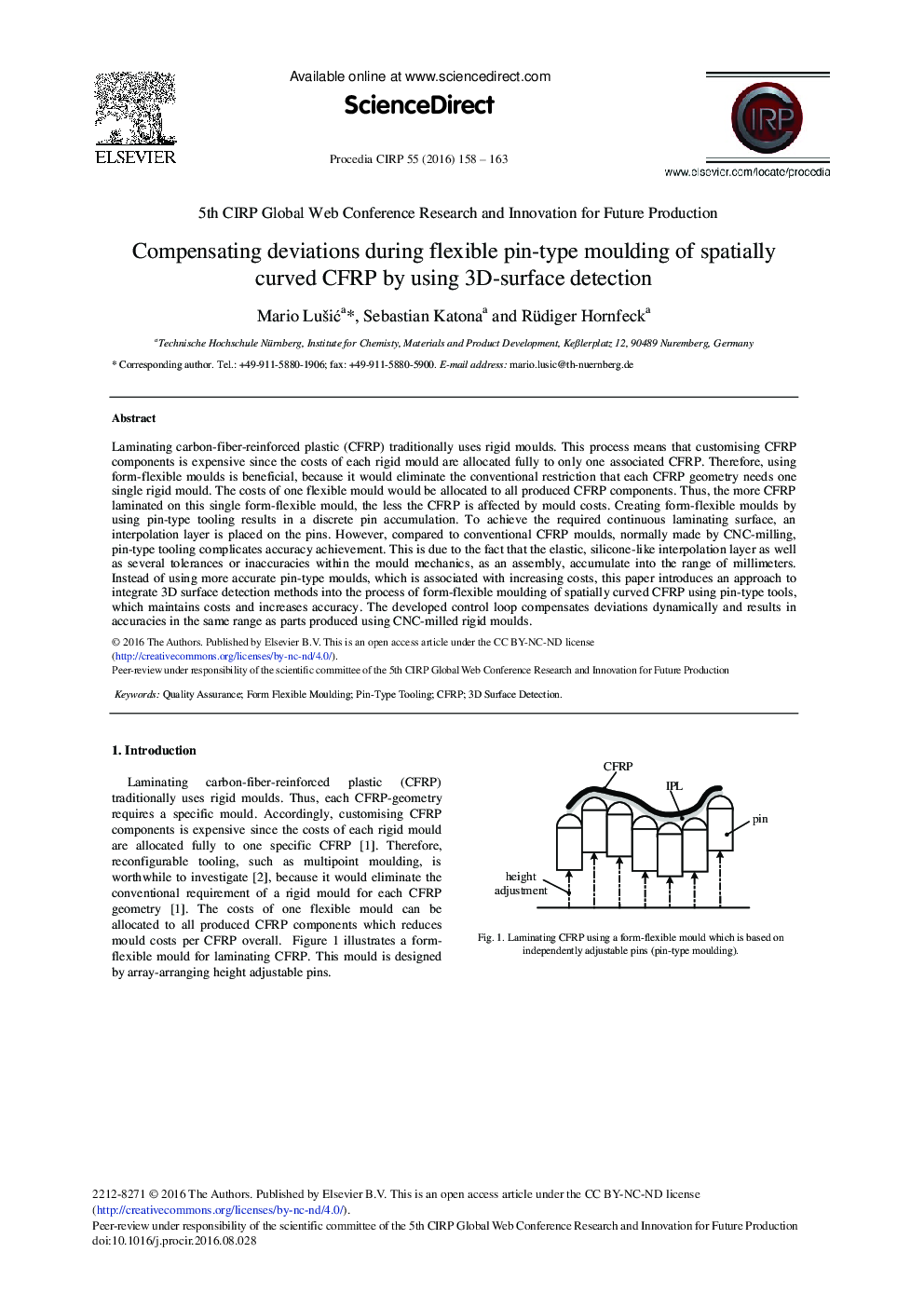| Article ID | Journal | Published Year | Pages | File Type |
|---|---|---|---|---|
| 5470034 | Procedia CIRP | 2016 | 6 Pages |
Abstract
Laminating carbon-fiber-reinforced plastic (CFRP) traditionally uses rigid moulds. This process means that customising CFRP components is expensive since the costs of each rigid mould are allocated fully to only one associated CFRP. Therefore, using form-flexible moulds is beneficial, because it would eliminate the conventional restriction that each CFRP geometry needs one single rigid mould. The costs of one flexible mould would be allocated to all produced CFRP components. Thus, the more CFRP laminated on this single form-flexible mould, the less the CFRP is affected by mould costs. Creating form-flexible moulds by using pin-type tooling results in a discrete pin accumulation. To achieve the required continuous laminating surface, an interpolation layer is placed on the pins. However, compared to conventional CFRP moulds, normally made by CNC-milling, pin-type tooling complicates accuracy achievement. This is due to the fact that the elastic, silicone-like interpolation layer as well as several tolerances or inaccuracies within the mould mechanics, as an assembly, accumulate into the range of millimeters. Instead of using more accurate pin-type moulds, which is associated with increasing costs, this paper introduces an approach to integrate 3D surface detection methods into the process of form-flexible moulding of spatially curved CFRP using pin-type tools, which maintains costs and increases accuracy. The developed control loop compensates deviations dynamically and results in accuracies in the same range as parts produced using CNC-milled rigid moulds.
Keywords
Related Topics
Physical Sciences and Engineering
Engineering
Industrial and Manufacturing Engineering
Authors
Mario LuÅ¡iÄ, Sebastian Katona, Rüdiger Hornfeck,
